St Bartholomew's Anglican Church
Burnley Street, Burnley
First organ, there 1905 in previous church; details unknown.
Present organ, B 1887 George Fincham for St Michael's Church, Wagga Wagga, NSW;
inst 1893 Chapel of St Peter, Melbourne Grammar School, South Yarra;
inst present loc 1913; altns 1976 P Burton; res 2002 Australian Pipe Organs.
2m, 10spst, 3c, tr. Gt: 8.8.8.4.2. Sw: 8.8.4.8. Ped: 16.
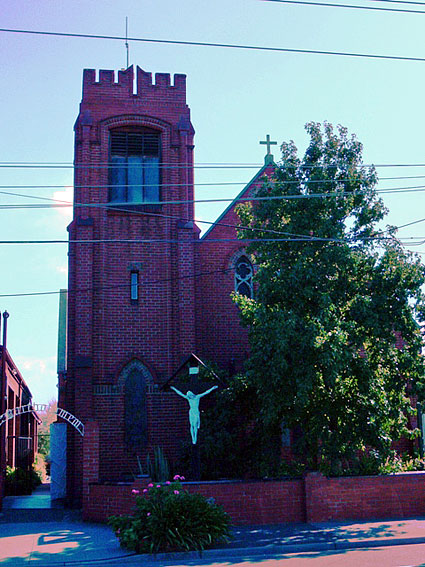

Land at the corner of Swan and Burnley Streets in Burnley was granted in 1870 for the erection of a church. The first church and Sunday School was erected in timber and opened in January 1885. The parish was severed from St Stephen's and came into independent existence in 1890. A new brick church on Swan Street was erected in 1910 to the designs of Thomas Watt and Son that included a porch facing Swan Street and a tower and octagonal spire at the north-west corner.
This location proved to be problematic owing to its proximity to a busy road, trams and the adjacent railway and factories. The present site of the church in Burnley Street was acquired in 1925. Gawler & Drummond, prominent Melbourne architects, prepared the plans for a new church and adjacent halls opened in 1926. Elements of the design of the brick church in Swan Street were copied, and much of the material was recycled, explaining the somewhat retrogressive style of the nave and transepts. However, the crenellated brick tower and baptistery are more contemporary in idiom. The building consists of a four-bay nave, transepts, sanctuary, vestry and organ chamber. The altar has been moved to the crossing and the former sanctuary is now utilised as a chapel. A hanging rood has been erected over the crossing.
The tower houses a peal of eight bells which were cast and installed between 1927 and 1929 by the local firm of John Danks & Son, probably unique in the firm's output. They were commissioned as a result of a legacy from Mrs Agnes Challingsworth, whose family presumably ran the engineering works along the Burnley railway line; the inscribed parapet "A. Challingsworth" is still partially observable. In 1988, to mark the Australian Bicentennial, six of the bells were converted to swinging operation from the original chiming operation. The original metal tower louvres were then replaced with wooden shutters which can be opened or closed to alter decibel levels and the ringing chamber made accessible by a spiral staircase.
The stained glass windows behind the high altar are the work of Brooks Robinson & Co. and are from the Swan Street church. Most of the remaining windows consist of plain leadlights, mostly incorporating green 'bottle' glass with pink borders, casting an attractive light across the interior.
The organ at St Bartholomew's Church was built in 1887 by George Fincham for St Michael's Catholic Church, Wagga Wagga, NSW. Fincham received virtually no payments for the organ and there was evidence that it had been vandalised. It was therefore dismantled and returned to the Fincham factory in 1893. The instrument was sold to the Church of England Grammar School in South Yarra and installed in the Chapel of St Peter, where it was opened on 1 September 1893.
The Melburnian of October 1893, p.79 (the school's magazine) reported:
"An organ built by Messrs. Fincham & Hobday has been put up in the Chapel at a cost of 320 Pounds. As this firm has dealt with us on the most generous terms, it will be a graceful act on the part of the School to make a keen effort to pay off the sum owing as early as possible, and we would urge those boys who have not yet given in their collection cards to fill them up as soon as they can and give them in to the proper authorities. Everyone who has heard the instrument is delighted with its sweet tone, and there can be no doubt that we are very fortunate in having been able to provide ourselves with such an organ so soon after the completion of the chapel. We append a description of it, and also a list of the subscriptions already collected.
"The organ contains two manuals, and independent pedal organ, viz.:-
Great organ, compass CC to G, 56 notes.
Swell organ, " CC to G, 56 "
Pedal organ, " CCC to F, 30 "
The materials and workmanship are of the highest class.
The metal pipes of best spotted metal and front pipes of Belgium zinc.
The case is of pine, with front pipes illuminated in colors and gold, making a very effective appearance.
The organ is entirely a colonial production, even to the casting of the metal for the pipes, and contains the following Stops:-
| Great Organ Open Diapason Claribel Dulciana Principal Fifteenth Swell Organ Open Diapason Gedact Wald Flute Oboe Pedal Organ Bourdon |
8ft. 8ft. 8ft. 4ft. 2ft. 8ft. 8ft. 4ft. 8ft. 16ft. |
metal wood metal metal metal metal wood wood metal wood |
CC to G, 56 pipes CC to G, 56 pipes CC to G, 56 pipes [44 pipes, grooved bass] CC to G, 56 pipes CC to G, 56 pipes CC to G, 56 pipes [44 pipes, grooved bass] CC to G, 56 pipes CC to G, 56 pipes [labelled Flute 4] CC to G, 56 pipes CCC to F, 30 pipes |
Couplers Swell Organ to Great Organ. Swell Organ to Pedal Organ. Great Organ to Pedal Organ. |
|||
Three Pedals for Combination of Stops to Great Organ.
The firm have agreed to guarantee the instrument (as usual with them) for a term of five years, and to keep the same in good order and tune for 12 months."
In 1913, at the instigation of A.E.H. Nickson, the School Organist, a new organ was acquired for the Chapel built in England by Norman & Beard and the old organ was sold to St Bartholomew's Anglican Church in Burnley. It was installed in October 1913 in the former church building at the corner of Burnley and Swan Streets. The present church building was opened in October 1926 and the organ was moved there at this time. At some stage the original facade pipe decoration was obliterated with silver frost and the swell shutters converted to a vertical disposition, operated by a balanced mechanical pedal.
In 1975, Peter Burton installed a new internal blower, removed the original double-rise reservoir and replaced it with a small regulating bellows, and replaced the wooden trackers with aluminium wire. The organ was turned around 90 degrees to face through an arch into the north transept, thus obscuring part of the casework and facade pipes.
The instrument received in 2002 a very comprehensive restoration by Australian Pipe Organs Pty Ltd. The work included:
Construction of a new double-rise reservoir (with iron counterbalances); the wooden trunking and concussion bellows have been fully restored and the 1975 blower placed in a solid silencing cabinet.
Replacement of the trackers in sugar pine, with phosphor bronze wires and threaded ends. All of the actions, including roller boards, squares and backfalls, stop actions and composition pedals, have been fully refurbished.
Repair of the pipework, cleaning and replacement of any defective tuning slides (the slides had been installed at an earlier period).
Repainting of the building frame and swell box in matt black paint (including the interior of the swell box which had been covered in white gloss paint in 1975).
Restoration of the console. The keys had been recovered in celluloid at some stage and worn surfaces have been replaced. The pedal board has been overhauled and a hardwood Fincham bench of appropriate style supplied in place of the 1975 bench. The music desk has been repositioned in the original configuration and the whole repaired and repolished.
Repolishing of the casework. The whole of the casework has been rubbed back and repolished. The surviving side panels have been carefully reconfigured to fit around the chamber arch and provide appropriate security.
A new case has been constructed in the arch facing the transept. This includes posts and caps, transom rail and panelling closely matching the style of the Fincham case. The facade pipes (of zinc, veneered in spotted metal) came from the 1934 Hill, Norman & Beard organ formerly in Littlejohn Memorial Chapel, Scotch College.
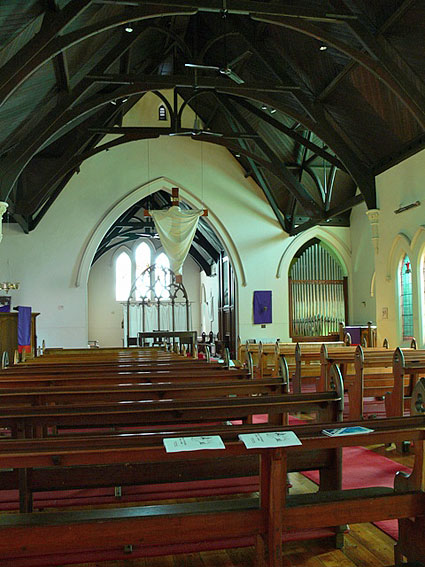 |
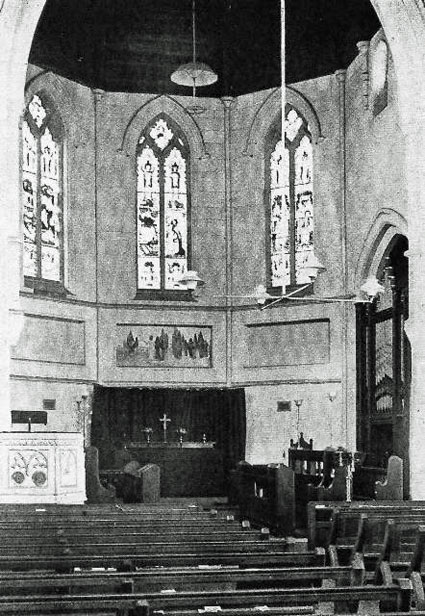 |
|
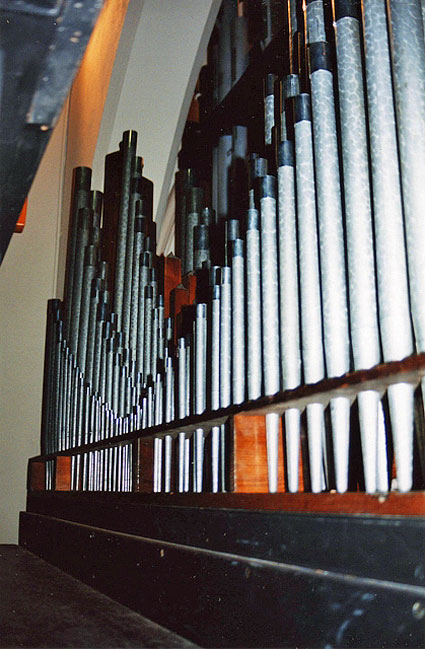 |
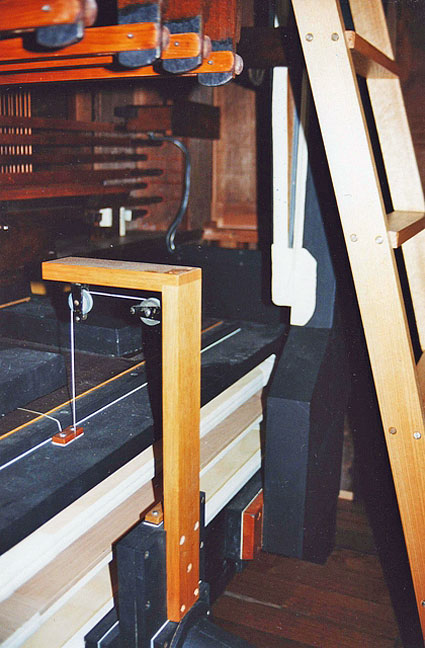 |
|
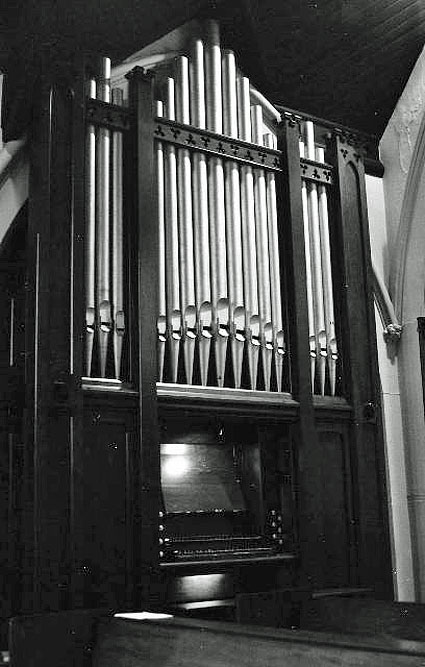 |
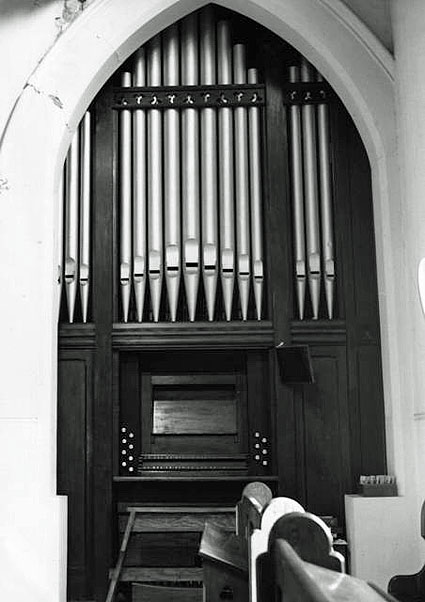 |
Photos: JRM
George Fincham papers, State Library of Victoria
The Melburnian, October 1893, p 79
St. Bartholomew's Anglican Church, Burnley: a history of the first 100 years 1885-1985. Burnley: the Church, 1985.
Restoration report: OHTA News vol 26, no 4 (October 2002), pp 11-12
John Maidment
3 November 2008